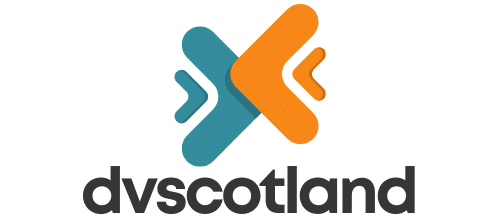How Is Machine Learning Being Used to Predict and Mitigate Urban Flooding?

Today, we’re going to delve into how Machine Learning is revolutionizing the way we predict and manage urban flooding. It’s a complex topic, full of data, models, prediction methods, and technological advancements. But don’t worry, we’ll break it down into digestible chunks, using simple, everyday English. If you’re a fan of learning about the latest advancements in tech and how they can be used to tackle real-world problems, then you’re in the right place.
Unzipping the Concept of Machine Learning
Before we dive into the deep end, let’s start by unpacking the concept of Machine Learning. Machine Learning, often abbreviated as ML, is a form of Artificial Intelligence that enables a system to learn from data rather than through explicit programming. It’s all about algorithms and models, the mathematical and computational tools that help us make sense out of data.
Also read : Unbox the excitement: exploring the charm of mystery toys
At its core, Machine Learning is about prediction. Based on the existing data, machine learning algorithms build models that can be used to predict future outcomes. These models can be incredibly complex and sophisticated, but they all essentially work by identifying patterns in the data and using those patterns to make predictions.
Flood Prediction Models and Their Importance
Now that we’ve got a basic understanding of what machine learning is, let’s see how it can be applied to predict urban flooding. The risk of flooding is a major concern in many urban areas around the world. Floods can cause significant damage to property and infrastructure, disrupt transport, and even pose a threat to human life.
In the same genre : How Can Smart Glasses Enhance Visual Assistance for the Visually Impaired?
Predicting when and where a flood might occur is a challenging task. It involves analyzing a huge amount of data from various sources, including weather forecasts, river levels, and topographical maps. Traditionally, flood prediction models have been based on hydrological and hydraulic principles. These models can be quite effective, but they are also time-consuming and require a high level of expertise to develop and use.
The Role of Machine Learning in Flood Prediction
This is where machine learning comes in. By training algorithms on historical flood data, machine learning can help to create more accurate and efficient flood prediction models.
Specifically, Machine Learning methods such as neural networks have shown great promise in the field of flood prediction. A neural network is a type of machine learning model that is designed to mimic the way the human brain works. It consists of interconnected layers of nodes or "neurons", which work together to process data and make predictions.
There have been quite a few scholarly publications on this subject that are easily accessible through Google Scholar. For instance, doi:10.3390/w11010059 discusses a machine learning model for flood prediction in urban areas. The feature selection in this model was based on a combination of historical flood data and weather forecasts, and the model was able to predict urban floods with a high degree of accuracy.
Mitigating the Risk of Urban Flooding with Machine Learning
But Machine Learning is not just about predicting when and where a flood might occur. It can also help urban planners and policymakers to mitigate the risk of flooding.
Machine learning can be used to identify areas that are particularly vulnerable to flooding. This information can then be used to guide urban planning decisions, such as where to build new infrastructure or how to design drainage systems. By doing so, it is possible to reduce the risk of flooding and its potential impact on urban communities.
Machine learning can also help to optimise the response to a flood event. By processing real-time data from various sources, machine learning algorithms can provide emergency services with accurate and timely information, helping them to respond more effectively to a developing situation.
So there you have it – a high-level look at how machine learning is being used to predict and mitigate urban flooding. This exciting field of research shows great promise and has the potential to make a significant contribution to urban resilience and sustainability.
It’s a wide and varied field, and we’ve just scratched the surface here. But hopefully, we’ve been able to give you a sense of how machine learning is making a difference in the world of flood prediction and mitigation.
Machine Learning and the Future of Urban Flood Management
Looking ahead, we can expect machine learning to play an increasingly important role in urban flood management. As more data becomes available and machine learning technologies continue to evolve, the accuracy and usefulness of flood prediction models are likely to improve.
At the same time, machine learning can also help to democratise flood prediction. By making these models more accessible and easier to use, machine learning could potentially enable more communities and organisations to take proactive steps to manage the risk of flooding.
There’s no doubt that we’re living in an exciting era of technological advancement, and machine learning is at the forefront of this revolution. From flood prediction to numerous other applications, machine learning is transforming the way we understand and interact with the world around us. So, let’s watch this space to see how machine learning continues to influence and reshape the world of urban flood management.
Remember, the future is not something that happens to us, it’s something we create. By leveraging the power of machine learning, we can help to create a future where urban communities are more resilient, sustainable, and prepared for whatever Mother Nature has to throw at us.
An In-depth Look into Flood Prediction Machine Learning Models
One key aspect of predicting urban floods with machine learning is the variety of models used. Several machine learning models, such as neural networks, support vector machines, and decision tree models, have the potential to accurately predict urban floods. These models are trained using historical flood data, weather forecasts, river levels, topographical maps, and remote sensing data.
For instance, artificial neural networks, denoted as ANN models, are particularly popular due to their ability to learn complex patterns and relationships in data. ANNs are a form of machine learning that replicates the neurological functions of the human brain, allowing them to ‘learn’ from the data they process. The ANN model is trained using historical flood data and weather forecasts, making it possible to predict future floods with a high degree of accuracy.
Google Scholar offers numerous studies showcasing the effectiveness of these models in predicting floods. A perfect example is the ANN model developed by researchers in their paper titled "A Machine Learning Model for Flood Prediction in Urban Areas" (doi:10.3390/w11010059). Their model boasted impressive accuracy, demonstrating the potential machine learning holds in this field.
In contrast, support vector machines are being used to classify data. This classification is helpful in identifying areas at a high risk of flooding. By sorting data into ‘high risk’ and ‘low risk’ categories, it assists urban planners in making informed decisions about infrastructure placement and design.
Decision tree models, on the other hand, offer a visual representation of possible outcomes based on different variables, such as rainfall, river level, and water flow rate. This visual representation can be incredibly useful in understanding and communicating the various factors that contribute to urban flooding.
Conclusion: Machine Learning and Urban Flood Management – A Promising Alliance
In conclusion, machine learning is changing the game in urban flood prediction and mitigation. The potential of machine learning in predicting and mitigating urban flooding is enormous and has barely been tapped. With an increasing amount of data available and the continuous evolution of machine learning technologies, we can expect much advancement in the field of flood prediction and mitigation.
Moving forward, we anticipate machine learning to democratise flood prediction. By making these advanced models more accessible and user-friendly, we could potentially empower more communities and organisations to take proactive measures to manage the risk of urban flooding.
As we stand at the forefront of this technological revolution, it’s exciting to imagine what the future holds. Machine learning is not only transforming the way we predict and respond to natural disasters like urban flooding but also reshaping our understanding of the world at large.
Leveraging the power of machine learning, we can create a future where urban communities are resilient, sustainable, and well-prepared for any climate change-induced eventuality. This journey is not without its challenges, but the potential benefits – saving lives, reducing property damage, and improving our response to natural disasters – make it a worthwhile pursuit.
In the end, the future of urban flood management is not simply something that will happen to us but something we will shape and create. And machine learning is one tool that will undoubtedly be central in this process.
